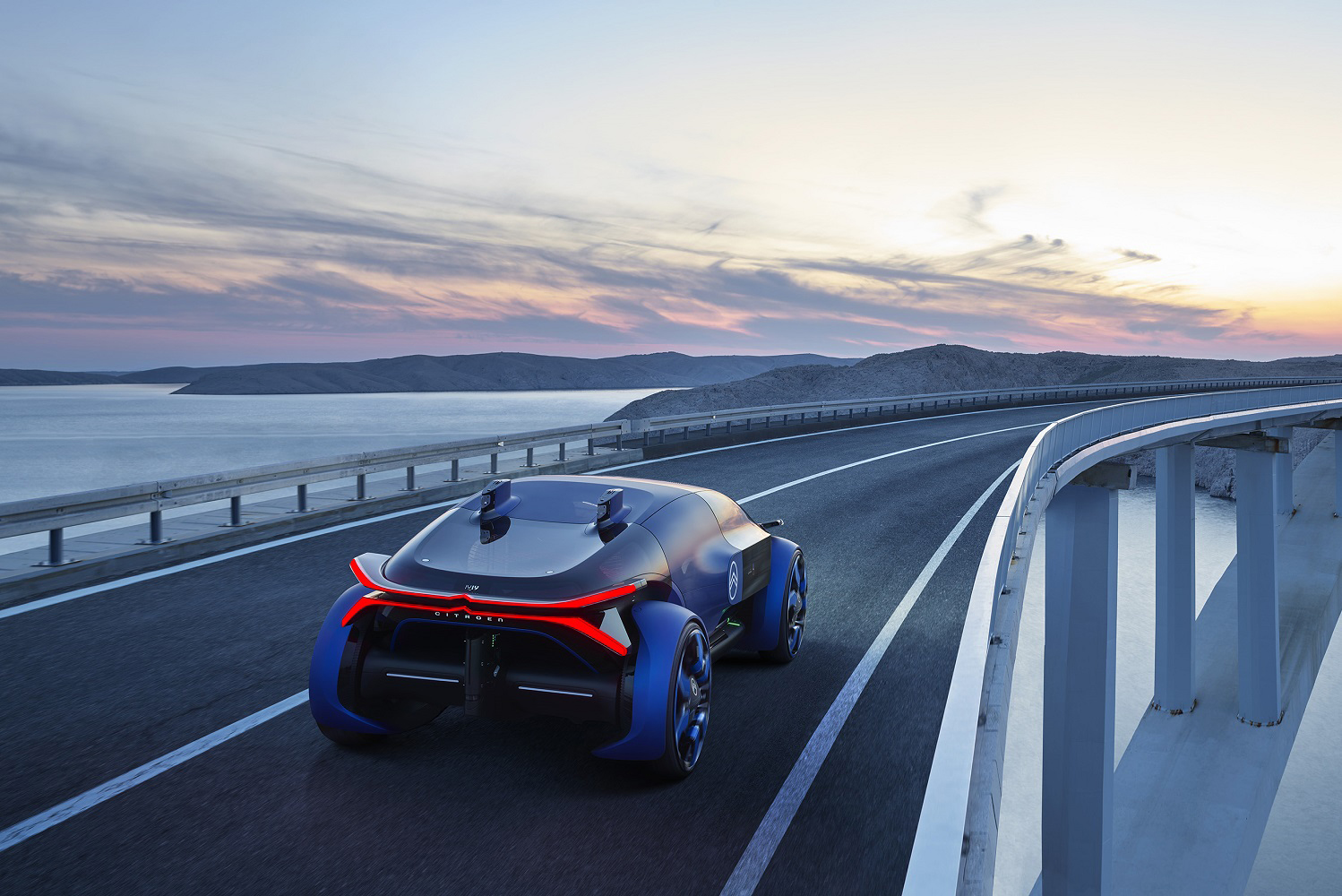Paris-based automaker Citroen is celebrating its 100th birthday by exploring how the car as we know it will change over the next century. The super-cute Ami One concept it unveiled in February previewed the urban commuter of the future. Its follow-up, a design study named 19_19 in a nod to the year the firm was founded, shows what road-tripping might look like in several decades’ time.
Tall, wide, and science fiction-like, the 19_19 looks like nothing you’ll see on the road today. And yet, if you look closely, you’ll identify several styling cues designers added as a tribute to the French firm’s illustrious past. The concave rear window was memorably seen on a sedan named CX, which was released in 1974. It’s not a retro job, though, and it proudly displays its cutting-edge tech. Designers intentionally installed the LIDAR units in a pair of pods integrated into the roof panel, for example. The chassis into which the battery pack and the electronic components are integrated is visible, too.
Citroen explained that it designed the 19_19’s interior as a living room on wheels, hence the sofa-like rear seat and the book shelf squeezed between the front occupants. There are no buttons, knobs, or dials, but the driver faces a screen embedded in the steering wheel, and key information about the car and its surroundings is displayed on a panel located ahead of the front passenger. Minimalism is the name of the game in Citroen’s vision of the future, and the company clearly predicts bookstores will still be open in 2119.
The driver is never alone in the 19_19 because the car is equipped with an artificial intelligence-powered personal assistant that anticipates the occupants’ needs. It doesn’t quite read minds, but it knows what users search for online, and suggests destinations accordingly. For example, if you’ve read up on national parks, it will suggest stopping if you’re driving past one. If it knows you stop at a Mexican restaurant every time you take a trip with your family, it will tell you where the nearest one is as lunchtime approaches.
With such a laid-back interior, the driver might understandably want to become a passenger. That’s possible thanks to autonomous technology that lets the car drive itself without the slightest human input when the right conditions are met. In this configuration, the steering wheel and the pedals retract, and the driver can sit back and enjoy the scenery, read, or chat with the other occupants. When it’s once again time to take the wheel, the driver can rely on an augmented-reality head-up display that projects navigation directions directly onto the road ahead to get from point A to point B without taking a wrong turn.
Technical specifications are a little bit vague. According to Citroen, the 19_19 is powered by an electric drivetrain that delivers up to 500 miles of range thanks in part to a 100-kWh lithium-ion battery pack mounted below the passenger compartment. It zaps the four wheels with 455 horsepower and 590 pound-feet of torque through a pair of electric motors, allowing the 19_19 to scoot from 0 to 62 mph in 5 seconds flat. Inductive charging technology sends the power cord the way of the carburetor, and Citroen envisions a future in which electric cars receive electricity while driving thanks to a series of wireless charging pads embedded in the road.
No shred of evidence suggests the 19_19 will make the transition from a concept car to a production model. The technologies it showcases explore what road-tripping could look like in the distant future. However, it signals the direction Citroen might take as it develops its next-generation models. And, with parent company PSA Groupe firmly committed to returning to the United States during the 2020s, some of the firm’s upcoming models could sail across the Atlantic sooner or later.



















